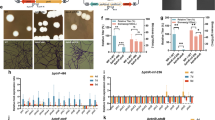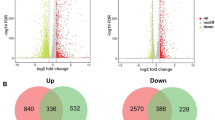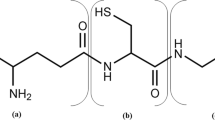Abstract
Diacetyl and higher alcohols, as the crucial flavour compounds, have been found to associate with the sensory properties of the wine. The genes ILV2, ILV3 and ILV5 in isoleucine–valine (ILV) biosynthetic pathway related to diacetyl and higher alcohols have been reported in Saccharomyces cerevisiae, whereas the regulatory mechanism in Saccharomyces uvarum is still unclear. The current study explored that ILV2 deletion and ILV3 or/and ILV5 overexpression in S. uvarum resulted in significant changes in the diacetyl and higher alcohols production. And of all the mutant strains, 3QV2 + V35 (ILV2 triple-gene-deletion with ILV3 + ILV5 overexpression), in which the diacetyl, isobutanol, and isoamyl alcohol contents were reduced by 67.56%, 25.46% and 21.05%, respectively, presented the most effective effect on regulation of diacetyl and higher alcohols production in wine. This study provided a valuable reference for further research on diacetyl and higher alcohol metabolism in S. uvarum and future optimization of yeast strains for wine and other alcoholic beverages.







Similar content being viewed by others
References
Cameleyre M, Lytra G, Tempere S, Barbe JC (2015) Olfactory impact of higher alcohols on red wine fruity ester aroma expression in model solution. J Agr Food Chem 63(44):9777–9788
Ma L, Huang S, Du L, Tang P, **ao D (2017) Reduced production of higher alcohols by Saccharomyces cerevisiae in red wine fermentation by simultaneously overexpressing BAT1 and deleting BAT2. J Agr Food Chem 65(32):6936–6942
Mink R, Kölling R, Sommer S, Schmarr HG, Schmeer MS (2015) Diacetyl formation by oenococcus oeni during winemaking induced by exogenous pyruvate. Am J Enol Viticul 66(1):85–90
Mink R, Sommer S, Köling R, Schmarr HG, Baumbach L, Scharfenberger-Schmeer M (2014) Diacetyl reduction by commercial Saccharomyces cerevisiae strains during vinification. Jnl Inst Brew 120(1):23–26
Pardo E, Rico J, Gil JV, Orejas M (2015) De novo production of six key grape aroma monoterpenes by a geraniol synthase-engineered S. cerevisiae wine strain. Microb Cell Fact 14:136.
Yang DY, Kakuda Y, Subden RE (2006) Higher alcohols, diacetyl, acetoin and 2,3-butanediol biosynthesis in grapes undergoing carbonic maceration. Food Res Int 39(1):112–116
Hayasaka Y, Bartowsky EJ (1999) Analysis of diacetyl in wine using solid-phase microextraction combined with gas chromatography-mass spectrometry. J Agr Food Chem 47(2):612–617
Martineau B, Acree TE, Henick-Kling T (1995) Effect of wine type on the detection threshold for diacetyl. Food Res Int 28(2):139–143
Valero E, Moyano L, Millan MC, Medina M, Ortega JM (2002) Higher alcohols and esters production by Saccharomyces cerevisiae. Influence of the initial oxygenation of the grape must. Food Chem 78(1):57–61.
Yang D, Luo X, Wang X (2014) Characteristics of traditional Chinese shanlan wine fermentation. J Biosci Bioeng 117(2):203–207
Bartowsky EJ, Henschke PA (2004) The ‘buttery’ attribute of wine-diacetyl-desirability, spoilage and beyond. Int J Food Microbiol 96(3):235–252
Haukeli AD, Lie S (2013) Conversion of α-acetolactate and removal of diacetyl a kinetic study. J I Brewing 84(2):85–89
Krogerus K, Gibson BR (2013) 125th, Anniversary Review: diacetyl and its control during brewery fermentation. J I Brewing 119:86–97
Dickinson JR, Norte V (1993) A study of branched-chain amino acid aminotransferase and isolation of mutations affecting the catabolism of branched-chain amino acids in Saccharomyces cerevisiae. Febs Lett 326:29–32
Hazelwood LA, Daran JM, van Maris AJA, Pronk JT, Dickinson JR (2008) The ehrlich pathway for fusel alcohol production: a century of research on Saccharomyces cerevisiae metabolism. Appl Environ Microb 74(8):2259–2266
Li W, Chen SJ, Wang JH, Zhang CY, Shi Y, Guo XW, Chen YF, **ao DG (2018) Genetic engineering to alter carbon flux for various higher alcohol productions by Saccharomyces cerevisiae for Chinese Baijiu fermentation. Appl Microbiol Biotechnol 102(4):1783–1795
Lilly M, Bauer FF, Styger G, Lambrechts MG, Pretorius LS (2010) The effect of increased branched-chain amino acid transaminase activity in yeast on the production of higher alcohols and on the flavour profiles of wine and distillates. Fems Yeast Res 6(5):726–743
Avalos JL, Fink GR, Stephanopoulos G (2013) Compartmentalization of metabolic pathways in yeast mitochondria improves production of branched chain alcohols. Nat Biotechnol. 31(4):335–341
Buijs NA, Siewers V, Nielsen J (2013) Advanced biofuel production by the yeast Saccharomyces cerevisiae. Curr Opin Chem Biol 17:480–488
Ida K, Ishii J, Matsuda F, Kondo T, Kondo A (2015) Eliminating the isoleucine biosynthetic pathway to reduce competitive carbon outflow during isobutanol production by Saccharomyces cerevisiae. Microb Cell Fact 14:1–9
Shi TT, Li P, Chen SJ, Chen YF, Guo XW, **ao DG (2017) Reduced production of diacetyl by overexpressing BDH2 gene and ILV5 gene in yeast of the lager brewers with one ILV2 allelic gene deleted. J Ind Microbiol Biot 44(3):397–405
Wang ZY, He XP, Liu N, Zhang BR (2010) Construction of self-cloning industrial brewing yeast with high-glutathione and low-diacetyl production. Int J Food Sci Tech 43(6):989–994
Lee WH, Seungoh S, Yihyun B, Nan H, ** YS, **ho S (2012) Isobutanol production in engineered Saccharomyces cerevisiae, by overexpression of 2-ketoisovalerate decarboxylase and valine biosynthetic enzymes. Bioproc Biosyst Eng 35(9):1467–1475
Park SH, Kim S, Hahn JS (2014) Metabolic engineering of Saccharomyces cerevisiae for the production of isobutanol and 3-methyl-1-butanol. Appl Microbiol Biot 98(21):9139–9147
Villa KD, Lee S, Goossens E, Debourg A, Masschelein CA (1995) Control of vicinal diketone production by brewer's yeast. I. Effects of ILV5 and ILV3 gene amplification on vicinal diketone production and ILV enzyme activity. J Am Soc Brew Chem 53:49–53
Zhang Y, Wang ZY, He XP, Liu N, Zhang BR (2008) New industrial brewing yeast strains with ILV2 disruption and LSD1 expression. Int J Food Microbiol 123(1–2):18–24
Almeida P, Gonçalves C, Teixeira S, Libkind D, Bontrager M, Masneuf-Pomarède I, Albertin W, Durrens P, Sherman DJ, Marullo P, Hittinger CT, Gonçalves P, Sampaio JP (2014) A Gondwanan imprint on global diversity and domestication of wine and cider yeast Saccharomyces uvarum. Nat Commun 5:4044
Masneuf-Pomarede I, Salin F, Börlin M, Coton E, Coton M, Le Jeune C, Legras J (2016) Microsatellite analysis of Saccharomyces uvarum diversity. FEMS Yeast Res 16:fow002.
Liu X, Sang M, Zhang X, Zhang T, Zhang H, He X, Li S, Sun X, Zhang Z (2017) Enhancing expression of SSU1 genes in Saccharomyces uvarum leads to an increase in sulfite tolerance and transcriptome profiles change. FEMS Yeast Res 17(3):fow023.
** L, Zhiming Z, Ming S, **aodong S, Chhengzhong H, Peiyao X, Hanyao Z (2018) Functional analysis of the FZF1 genes of Saccharomyces uvarum. Front Microbiol 9:96
Li P, Gao Y, Wang CL, Zhang CY, Guo XW, **ao DG (2018) Effect of ILV6 deletion and expression of aldB from Lactobacillus plantarum in Saccharomyces uvarum on diacetyl production and wine flavor. J Agr Food Chem 66(32):8556–8565
Gietz RD, Woods RA (2002) Transformation of yeast by lithium acetate/single-stranded carrier DNA/polyethylene glycol method. Method Enzymol 350:87–96
OIV (2009) Compendium of international methods of wine and must analysis. International Organisation of Vine and Wine Paris.
Li P, Guo XW, Shi T, Hu ZH, Chen YF, Du LP, **ao DG (2017) Reducing diacetyl production of wine by overexpressing bdh1, and bdh2, in saccharomyces uvarum. J Ind Microbiol Biot 44(11):1541–1550
Marie-Ange T, Manon D, François JM, Jean-Luc P (2009) Validation of reference genes for quantitative expression analysis by real-time RT-PCR in Saccharomyces cerevisiae. Bmc Mol Biol 10(1):99
Shi TT, Guo XW, Li P, Zhou Z, **ao DG (2016) Diacetyl content reduction in industrial brewer’s yeast through ILV2 disruption and BDH1 expression. Eur Food Res Technol 242(6):919–926
Kondo T, Tezuka H, Ishii J, Matsuda F, Ogino C, Kondo A (2012) Genetic engineering to enhance the Ehrlich pathway and alter carbon flux for increased isobutanol production from glucose by Saccharomyces cerevisiae. J Biotechnol 159(1–2):32–37
**ao C, Nielsen KF, Borodina I, Kiellandbrandt MC, Karhumaa K (2011) Increased isobutanol production in Saccharomyces cerevisiae by overexpression of genes in valine metabolism. Biotechnol Biofuels 4(1):21
Matsuda F, Kondo T, Ida K, Tezuka H, Ishii J, Kondo A (2012) Construction of an artificial pathway for isobutanol biosynthesis in the cytosol of Saccharomyces cerevisiae. Biosci Biotech Bioch 76(11):2139–2141
Zelenaya-troitskaya O, Perlman PS, Butow RA (1995) An enzyme in yeast mitochondria that catalyzes a step in branched-chain amino acid biosynthesis also functions in mitochondrial DNA stability. Embo J 14(13):3268–3276
Omura F (2008) Targeting of mitochondrial Saccharomyces cerevisiae Ilv5p to the cytosol and its effect on vicinal diketone formation in brewing. Appl Microbiol Biot 78(3):503–513
Acknowledgements
This work was supported by the National Natural Science Foundation of China (No. 31571809), the Innovative Research Team of Tian** Municipal Education Commission (TD13-5013), and Public Service Platform Project for Selection and Fermentation Technology of Industrial Microorganisms (17PTGCCX00190).
Author information
Authors and Affiliations
Corresponding author
Ethics declarations
Conflict of interest
The authors declare that they have no competing interests.
Ethical statement
This manuscript is in compliance with Ethical Standards. This manuscript does not contain any studies with human participants or animals performed by any of the authors.
Additional information
Publisher's Note
Springer Nature remains neutral with regard to jurisdictional claims in published maps and institutional affiliations.
Rights and permissions
About this article
Cite this article
Li, P., Li, T., Zhang, CY. et al. Effect of ILV2 deletion and ILV3 or/and ILV5 overexpression in Saccharomyces uvarum on diacetyl and higher alcohols metabolism during wine fermentation. Eur Food Res Technol 246, 563–572 (2020). https://doi.org/10.1007/s00217-019-03422-w
Received:
Revised:
Accepted:
Published:
Issue Date:
DOI: https://doi.org/10.1007/s00217-019-03422-w




